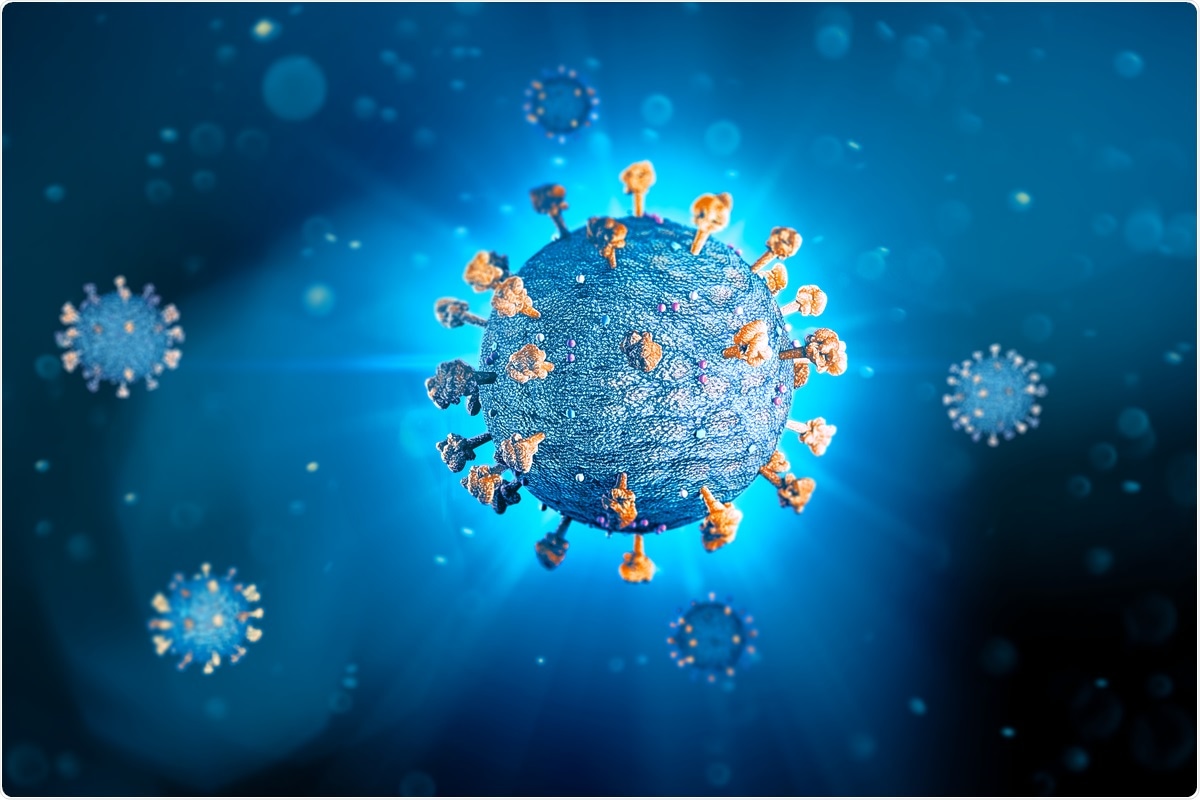The spike protein of severe acute respiratory syndrome coronavirus 2 (SARS-CoV-2) is responsible for binding with the human angiotensin-converting enzyme 2 (ACE2) receptor to facilitate host cell entry, achieved firstly by bonding via the receptor-binding domain and undergoing subsequent conformational changes that allow membrane fusion. The cytosolic side of this membrane-spanning protein domain is cysteine-rich and capable of undergoing protein palmitoylation, the reversible addition of palmitic acid.
 Study: Inhibition of SARS-CoV-2 spike protein palmitoylation reduces virus infectivity. Image Credit: Naeblys/ Shutterstock
Study: Inhibition of SARS-CoV-2 spike protein palmitoylation reduces virus infectivity. Image Credit: Naeblys/ Shutterstock

 *Important notice: bioRxiv publishes preliminary scientific reports that are not peer-reviewed and, therefore, should not be regarded as conclusive, guide clinical practice/health-related behavior, or treated as established information.
*Important notice: bioRxiv publishes preliminary scientific reports that are not peer-reviewed and, therefore, should not be regarded as conclusive, guide clinical practice/health-related behavior, or treated as established information.
Palmitoylation is a common post-translational modification that occurs in over 30% of all cellular proteins to encourage protein stability, regulate membrane trafficking, and undertake vesical fusion. Palmitoylation of viral proteins has been shown to impact viral replication and fusion, playing an essential role in some cases.
For example, the murine coronavirus spike protein must undergo palmitoylation to assemble and enter host cells properly. Similarly, previous reports have demonstrated that modifications to the SARS-CoV spike protein that prevents palmitoylation also reduce the ability of the virus to cause the formation of syncytia.
In a paper recently uploaded to the preprint server bioRxiv*, it is demonstrated that palmitoylation of the first five cysteine residues of the C-terminal domain of the SARS-CoV-2 spike protein is essential to SARS-CoV-2, facilitating cell entry and the formation of syncytia. Endogenous enzymes facilitate palmitoylation of the spike protein, and thus inhibition of these enzymes could be a viable strategy against COVID-19. The group also put forward two drug candidates that demonstrate inhibition of SARS-CoV-2 in treated cell culture.
The role of palmitoylation
The C terminal cysteine-rich domain of the SARS-CoV-2 spike protein bears ten highly conserved cysteine residues. To investigate the role of palmitoylation at these sites, the group first exchanged them with serine, finding that some of the residue clusters are more prone to palmitoylation than others.
Importantly, mutating the clusters with the greatest preference for palmitoylation also degraded the ability of SARS-CoV-2 spike pseudotyped lentivirus to enter host cells most greatly, highlighting to the group that the first five residues (C1235, 1236, 1240, 1241, and 1243) are the most functionally important. This held true for infected cell – uninfected cell interactions, where mutation of these key clusters caused a marked reduction in fusogenic activity and syncytia formation between cells.
Once a cell is infected, spike protein trimerization occurs within the endoplasmic reticulum membrane of host cells before virion particle assembly. The group next compared full-length wild-type spike proteins to those produced with serine mutations. Mutant spike proteins unable to undergo palmitoylation were defective in trimer formation, potentially explaining the reduced capacity to enter host cells observed.
Unlike other betacoronaviruses, SARS-CoV-2 also bears a furin-mediated cleavage site to facilitate host membrane fusion, which was found to be unaffected by the mutations imposed by the group. Similarly, affinity towards the ACE2 receptor was found to be unaffected by the mutations.
The reduced infectivity of mutated spike protein pseudovirus was also found to not be due to a lessened ability to transport virion particles from the host endoplasmic reticulum to plasma membrane for outward expression, as only spike proteins with fully mutated cysteine residues showed a lesser expression, not those with the first five key residues.
Therefore, the group has established that palmitoylation of the full cysteine chain is important to proper spike trimerization, with the first five residues playing a less important role in this regard.
Inhibition of SARS-CoV-2 palmitoylation
Palmitoyl acyltransferase enzymes induce palmitoylation of the thiol group of cysteine residues, and the group next sought to identify the enzyme responsible for palmitoylation of the SARS-CoV-2 spike protein. Proteins DHHC5 and DHHC9 were knocked down in HEK293T cells using siRNA, finding that knockdown of the former caused a compensatory upregulation in the latter, which was not reciprocated. Therefore, only knockdown of DHHC9 was seen to reduce spike protein palmitoylation in infected cells significantly.
DHHC9 knockdown cells were then exposed to pseudovirus particles bearing the SARS-CoV-2 spike protein, finding that these cells were more resistant to infection and significantly less prone to engage in syncytia formation. However, these cells were no less resistant to infection originating from neighboring untreated cells with palmitoylated spike proteins, implying that palmitoylation of the spike protein is only necessary for initial infection and not any other downstream event. Immunofluorescence experiments further confirm that DHHC5 localized with the spike protein in the endoplasmic reticulum and Golgi.
To test whether drug inhibition of DHHC9 could lessen SARS-CoV-2 infectivity to group assembled several palmitoyl acyltransferase inhibitors that were computationally screened for affinity. The toxicity of a selection of these compounds was tested in HEK293T and Caco-2 cells and sufficiently tolerated compounds utilized in a SARS-CoV-2 spike palmitoylation assay.
Two unnamed compounds, termed compounds 13 and 25, were found to inhibit SARS-CoV-2 infection in cell culture. Cells pretreated with either compound and subsequently infected with SARS-CoV-2 exhibited a dose-dependent reduction in SARS-CoV-2 viral load and reduction in syncytia size. Viral progeny collected from the supernatant of the treated cells then demonstrated significantly reduced infectivity towards uninfected untreated cells, demonstrating that preventing palmitoylation during the generation of new viral particles can impair their ability to infect new host cells.

 *Important notice: bioRxiv publishes preliminary scientific reports that are not peer-reviewed and, therefore, should not be regarded as conclusive, guide clinical practice/health-related behavior, or treated as established information.
*Important notice: bioRxiv publishes preliminary scientific reports that are not peer-reviewed and, therefore, should not be regarded as conclusive, guide clinical practice/health-related behavior, or treated as established information.